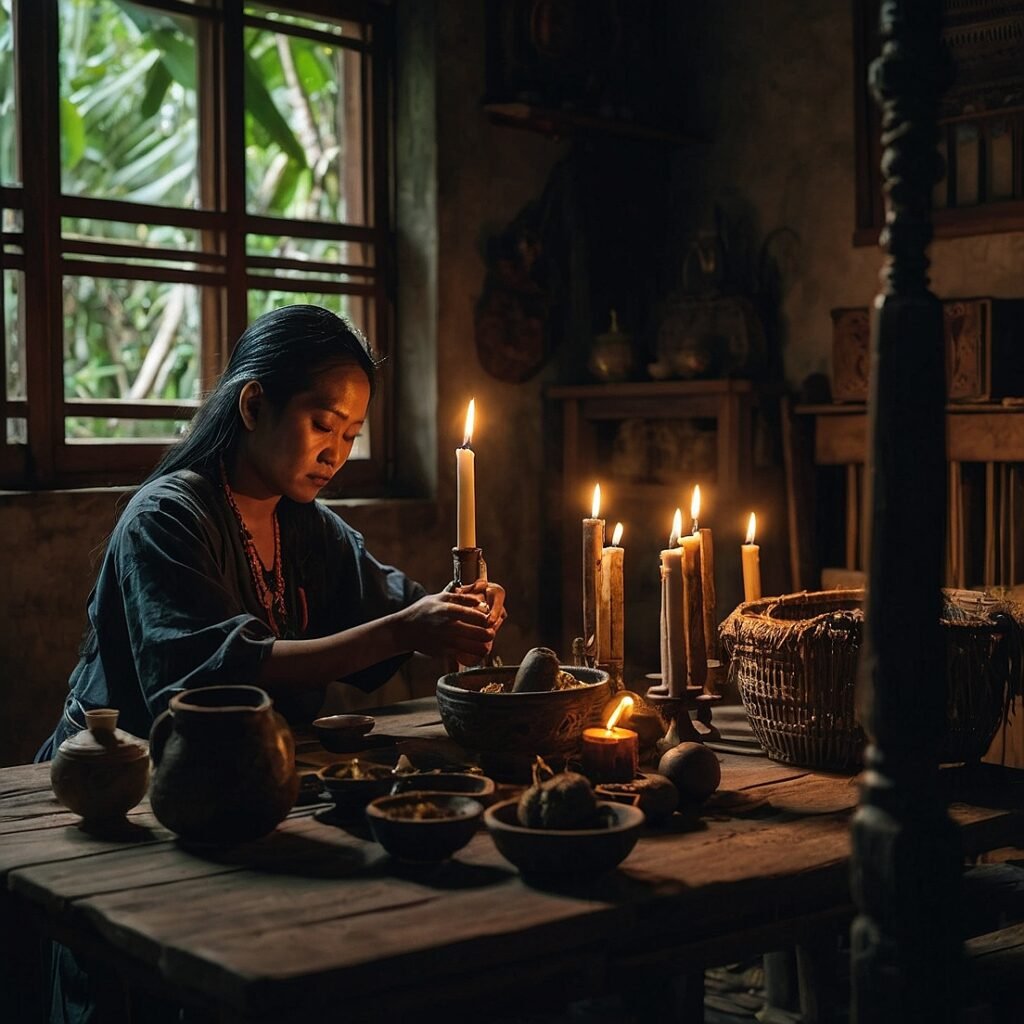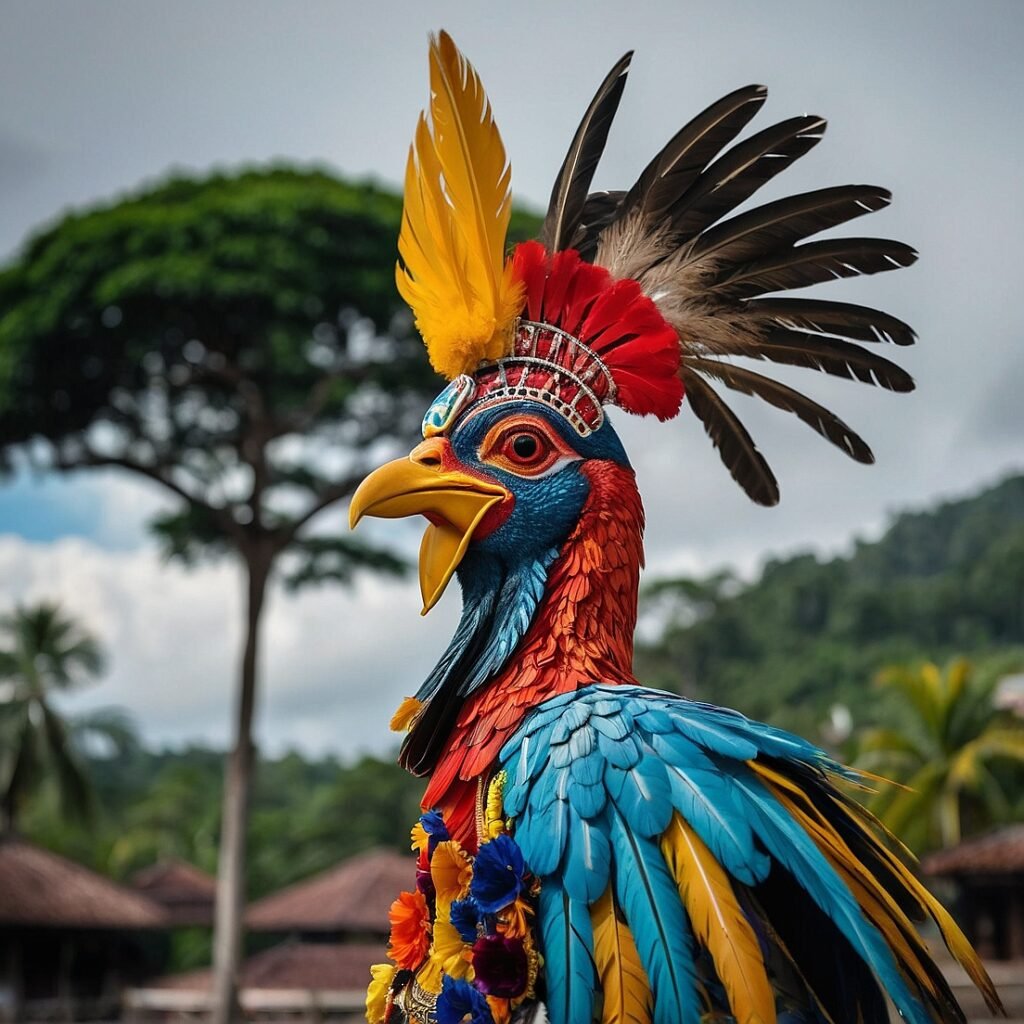As someone who’s always been fascinated by the supernatural, I’ve found myself drawn to the enigmatic practices of Filipino witchcraft and sorcery, known as Kulam. This ancient tradition, deeply rooted in Philippine culture, has captivated my imagination and led me on a journey of discovery. Join me as we delve into the shadowy realm of Kulam, exploring its history, practices, and enduring influence on Filipino society.
The Origins of Kulam: A Tapestry of Beliefs
When I first began researching Kulam, I was struck by the rich tapestry of beliefs that have shaped this practice over centuries. Kulam’s roots stretch back to pre-colonial times, intertwining with indigenous animistic beliefs, shamanistic traditions, and later, influences from Spanish Catholicism and American Protestant missionaries.
The Pre-Colonial Era
Before the arrival of Western colonizers, the Philippine archipelago was home to diverse indigenous cultures, each with its own spiritual practices. These early Filipinos believed in a world teeming with spirits, both benevolent and malevolent. Shamans, known as babaylans, served as intermediaries between the human and spirit worlds, wielding powers that would later become associated with Kulam.
Colonial Influences
The arrival of Spanish colonizers in the 16th century brought significant changes to Philippine society, including the introduction of Catholicism. As I delved deeper into my research, I was fascinated to learn how the Spanish friars often demonized indigenous spiritual practices, labeling them as “witchcraft” or “sorcery.” This stigmatization paradoxically contributed to the mystique and fear surrounding Kulam, driving it underground but never fully eradicating it.
The American Period and Beyond
The American colonial period brought further changes, introducing Protestant Christianity and Western education. Despite these influences, Kulam persisted, adapting and evolving. Today, it exists as a syncretic practice, blending elements of indigenous beliefs, Catholicism, and even modern New Age concepts.
The Practice of Kulam: Rituals and Techniques
As I continued my exploration of Kulam, I became increasingly intrigued by the various rituals and techniques employed by practitioners. It’s important to note that Kulam is not a monolithic practice; it varies across different regions of the Philippines and even from practitioner to practitioner. However, some common elements emerge.
Casting Spells and Curses
One of the most well-known aspects of Kulam is the casting of spells and curses. Practitioners, often called mangkukulam, are believed to have the power to inflict harm on their targets through magical means. These spells can range from minor inconveniences to severe illnesses or even death.
The Use of Effigies
A particularly intriguing aspect of Kulam is the use of effigies or dolls to represent the target of a spell. These dolls, often made of wax or cloth, are believed to be linked to the intended victim. The mangkukulam may stick pins into the doll or perform other ritualistic acts, with the belief that the victim will experience corresponding pain or misfortune.
Healing and Protection
While Kulam is often associated with malevolent magic, it’s crucial to understand that it also encompasses practices aimed at healing and protection. Some practitioners specialize in countering curses or providing talismans (anting-anting) to ward off evil spirits and negative energy.
Divination and Fortune-telling
Many Kulam practitioners also engage in divination and fortune-telling. These practices can involve reading palms, interpreting dreams, or using various tools such as cards or crystals to gain insight into the future or uncover hidden truths.
The Tools of the Trade: Implements Used in Kulam
In my research, I’ve come across a fascinating array of tools and objects used in Kulam practices. These items often carry deep symbolic meaning and are believed to enhance the practitioner’s power. Here’s a table summarizing some of the most common implements:
| Tool | Description | Purpose |
|---|---|---|
| Mutyâ | Small glass or stone beads | Used in divination and healing rituals |
| Buntot Pagi | Stingray’s tail | Believed to ward off evil spirits |
| Tungkod | Wooden staff or cane | Used for channeling energy and protection |
| Agua Bendita | Holy water | Used for blessing and purification |
| Tinaga | Knife or blade | Used in various rituals and for protection |
| Palaspas | Woven palm fronds | Used for blessing and protection |
The Role of Kulam in Filipino Society: Past and Present
As I delved deeper into the world of Kulam, I became increasingly aware of its complex role in Filipino society. Throughout history, Kulam has been both feared and respected, sought after and shunned. Its influence can be seen in various aspects of Filipino culture, from literature and film to everyday superstitions.
Kulam in Popular Culture
Filipino literature and cinema have long been fascinated with Kulam, often portraying it as a mysterious and dangerous force. Films like “Feng Shui” (2004) and “Maria Leonora Teresa” (2014) have brought Kulam-inspired stories to mainstream audiences, reflecting the enduring grip of these beliefs on the Filipino imagination.
Legal and Social Implications
The practice of Kulam has had significant legal and social implications throughout Philippine history. During the Spanish colonial period, accusations of witchcraft could lead to severe punishment. Even in modern times, belief in Kulam has occasionally intersected with the legal system, as evidenced by occasional news reports of violence against suspected mangkukulam.
Kulam and Healthcare
One particularly interesting aspect of Kulam’s role in Filipino society is its relationship with healthcare. Despite the prevalence of modern medicine, many Filipinos still turn to traditional healers, some of whom incorporate elements of Kulam in their practices. This has led to a complex interplay between traditional and modern approaches to health and healing.
The Psychology of Belief: Understanding Kulam’s Enduring Appeal
As someone with a background in psychology, I find the enduring belief in Kulam fascinating from a psychological perspective. Several factors contribute to its continued relevance in Filipino society:
The Need for Control
In a world that often feels chaotic and unpredictable, Kulam offers a sense of control. The belief that one can influence events through magical means can be comforting, especially in times of hardship or uncertainty.
Cultural Identity
For many Filipinos, belief in Kulam is tied to cultural identity. It represents a connection to pre-colonial traditions and a form of resistance against Western cultural domination.
The Power of Suggestion
The nocebo effect, where negative expectations lead to negative outcomes, may play a role in some Kulam-related phenomena. If someone believes they’ve been cursed, they may experience real physical or psychological symptoms as a result of that belief.
Explanation for the Unexplainable
Kulam provides a framework for understanding and explaining events that might otherwise seem random or inexplicable. This can be particularly appealing in situations where scientific explanations are lacking or unsatisfying.
Kulam in the Modern World: Adaptation and Evolution
As I’ve continued my exploration of Kulam, I’ve been struck by how this ancient practice has adapted to the modern world. Far from being a relic of the past, Kulam continues to evolve, finding new expressions and relevance in contemporary Filipino society.
The Internet Age
The digital age has brought new dimensions to the practice of Kulam. Social media platforms and online forums have become spaces where people share experiences, seek advice, and even look for practitioners. This online presence has both broadened access to Kulam-related information and contributed to the spread of misinformation.
Commercialization
There’s been a growing commercialization of Kulam-related products and services. From mass-produced amulets to “spiritual cleansing” services, entrepreneurs have found ways to capitalize on the enduring interest in these practices.
New Age Influences
As global New Age movements have gained popularity, some practitioners have incorporated elements from these traditions into their Kulam practices. This syncretic approach has led to new interpretations and applications of traditional Kulam concepts.
Academic Interest
In recent years, there’s been an increasing academic interest in Kulam and other traditional Filipino spiritual practices. Scholars from fields such as anthropology, folklore studies, and religious studies have begun to examine Kulam through various theoretical lenses, contributing to a more nuanced understanding of its role in Filipino culture.
The Ethics of Kulam: A Complex Moral Landscape
As I’ve delved deeper into the world of Kulam, I’ve found myself grappling with the ethical implications of these practices. The moral landscape of Kulam is complex and often ambiguous, raising challenging questions about power, intention, and cultural relativism.
The Question of Harm
One of the most pressing ethical concerns surrounding Kulam is the potential for harm. Practices aimed at cursing or hexing others clearly conflict with widely held ethical principles. However, defenders of Kulam might argue that these practices serve as a form of justice or protection for the vulnerable.
Informed Consent
Many Kulam practices involve attempting to influence others without their knowledge or consent. This raises important questions about personal autonomy and the right to make informed decisions about one’s own life.
Cultural Preservation vs. Scientific Skepticism
There’s an ongoing debate about how to approach traditional practices like Kulam in an increasingly scientific and globalized world. While there’s value in preserving cultural heritage, uncritical acceptance of potentially harmful beliefs can also be problematic.
The Role of the Practitioner
Kulam practitioners wield significant power in their communities, which comes with ethical responsibilities. How this power is used – whether for personal gain, community service, or other purposes – is a crucial ethical consideration.
Kulam and Mental Health: A Delicate Balance
In my research, I’ve become increasingly interested in the intersection between Kulam and mental health. This is a sensitive and complex topic that deserves careful consideration.
Alternative Healing or Harmful Delay?
For some individuals, Kulam practices may provide comfort and a sense of control when dealing with mental health issues. However, reliance on these practices could potentially delay seeking professional mental health care, leading to worsened outcomes.
Cultural Competence in Mental Health Care
Understanding Kulam beliefs can be crucial for mental health professionals working with Filipino communities. A culturally competent approach that respects these beliefs while providing evidence-based care is essential.
The Power of Belief
The placebo effect demonstrates that belief can have real physiological effects. In some cases, Kulam practices might harness this power of belief to produce positive outcomes. However, the nocebo effect also shows that negative beliefs can lead to negative health consequences.
Stigma and Misconceptions
Misconceptions about mental illness being caused by curses or evil spirits can contribute to stigma and prevent people from seeking help. Educating communities about mental health while respecting cultural beliefs is a delicate but important task.
The Future of Kulam: Preservation and Evolution
As I look to the future, I find myself wondering about the fate of Kulam in an increasingly globalized and technologically advanced world. Will these ancient practices fade away, or will they find new forms of expression?
Digital Transformation
The internet and social media have already begun to transform how Kulam is practiced and perceived. As digital technology continues to advance, we may see further evolution in how these practices are shared, learned, and performed.
Scientific Investigation
There’s potential for more rigorous scientific investigation of Kulam practices. While maintaining respect for cultural beliefs, researchers might explore the psychological, social, and potentially physiological effects of these practices.
Cultural Heritage Preservation
Efforts to document and preserve Kulam practices as part of Filipino cultural heritage may increase. This could involve recording oral traditions, preserving artifacts, and ensuring that knowledge is passed down to future generations.
Legal and Ethical Frameworks
As society grapples with the place of traditional practices in the modern world, we may see the development of new legal and ethical frameworks to address issues related to Kulam and similar practices.
The Enduring Mystery of Kulam
As I conclude this exploration of Kulam, I’m struck by the depth and complexity of this fascinating aspect of Filipino culture. From its ancient roots to its modern manifestations, Kulam continues to captivate, challenge, and inspire.
Whether viewed as a powerful spiritual practice, a cultural relic, or a psychological phenomenon, Kulam offers valuable insights into the human need for meaning, control, and connection to something greater than ourselves. As we move forward, finding ways to respect and understand these traditions while addressing potential harms will be crucial.
My journey into the world of Kulam has been enlightening, challenging my preconceptions and expanding my understanding of the diverse ways humans make sense of the world around them. As with any exploration of cultural practices, it’s important to approach this topic with respect, curiosity, and an open mind.
Kulam, with all its mystery and controversy, remains an integral part of the Filipino cultural tapestry. As we continue to navigate the complexities of our modern world, practices like Kulam remind us of the rich diversity of human belief and experience.
Disclaimer: This article is based on research and personal exploration up to 2016. It is intended for informational purposes only and should not be taken as an endorsement of any particular practices. Some aspects of Kulam may be controversial or potentially harmful if misused. Readers are encouraged to approach this topic with critical thinking and respect for cultural differences. If you notice any inaccuracies in this article, please report them so we can correct them promptly.




